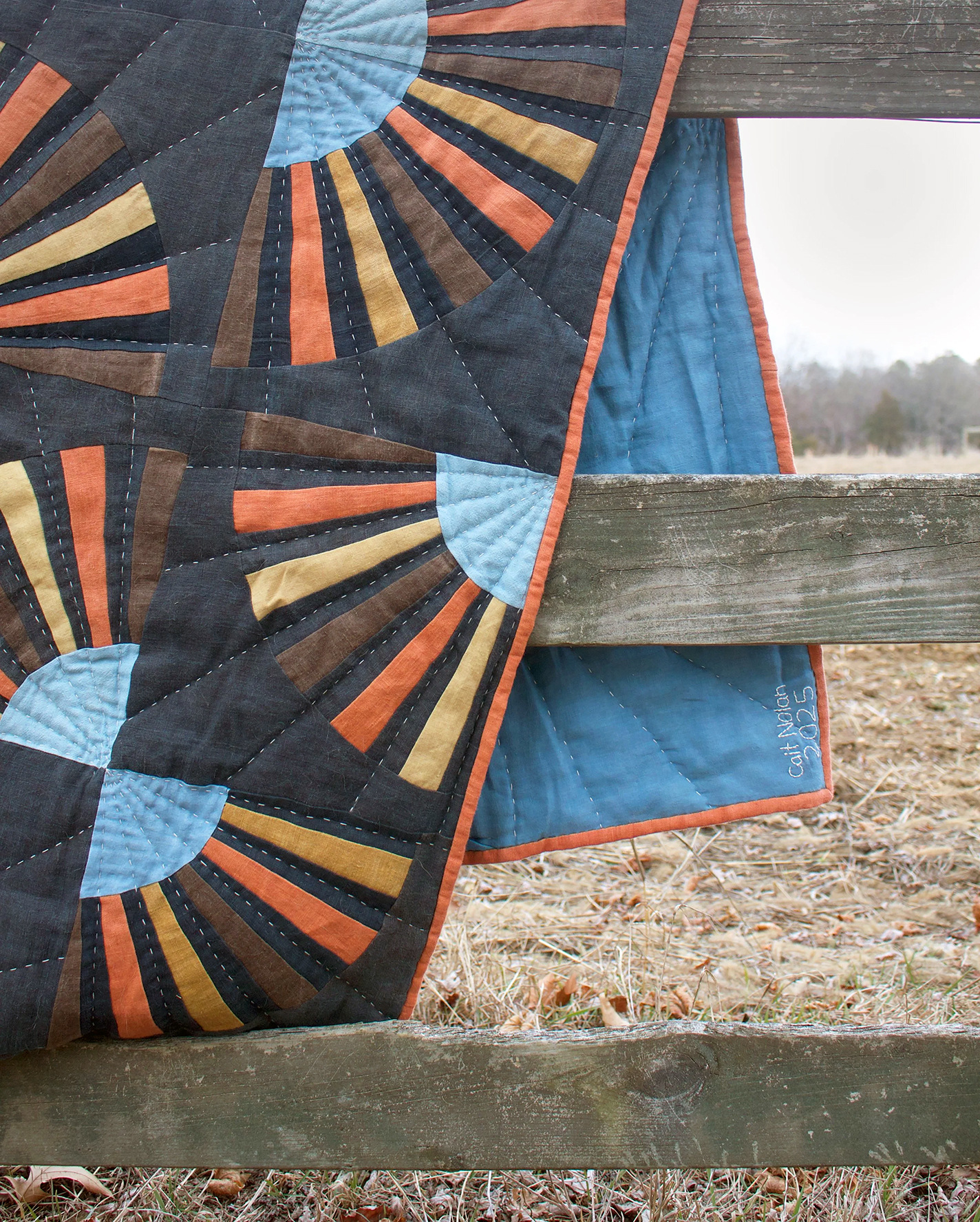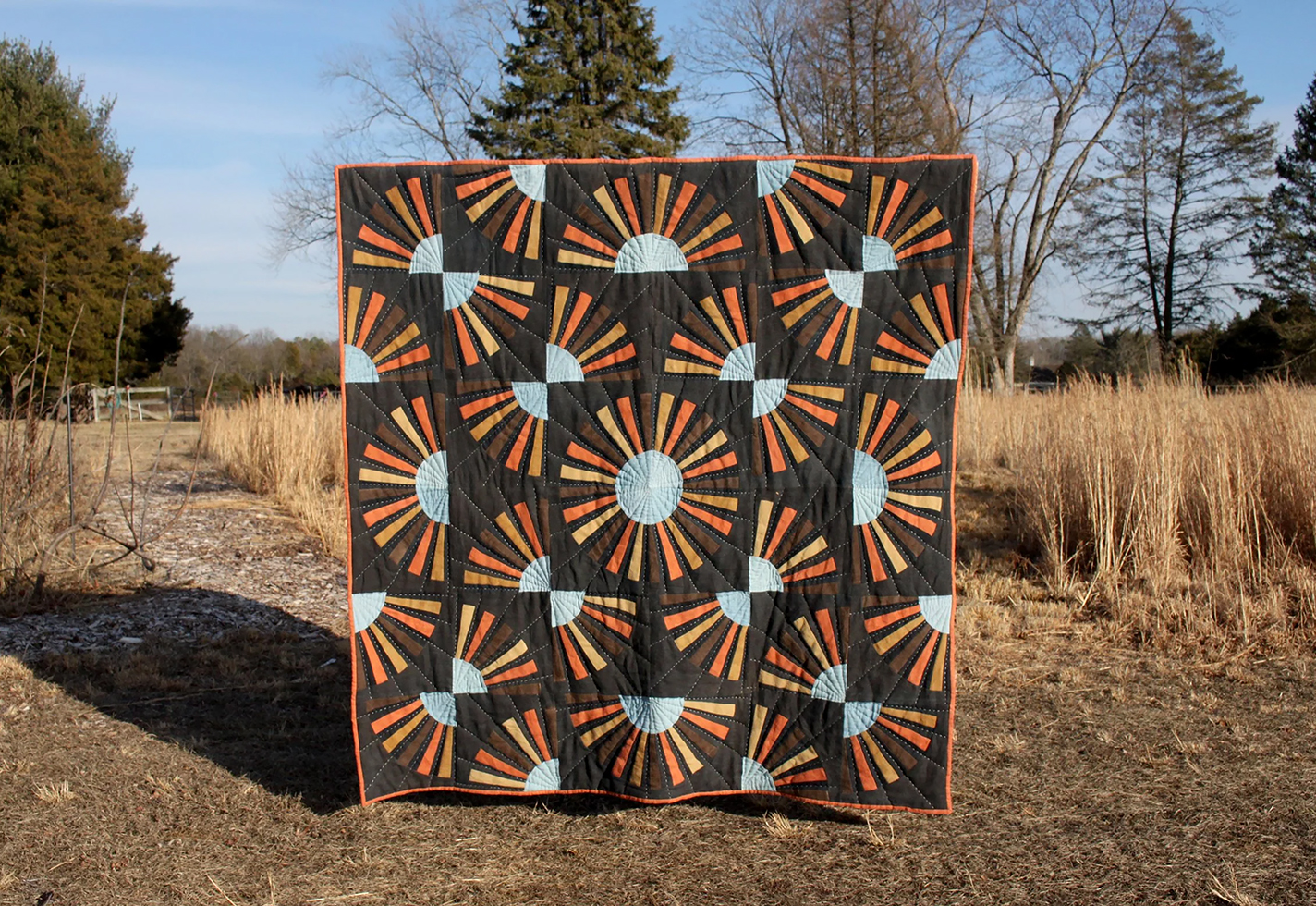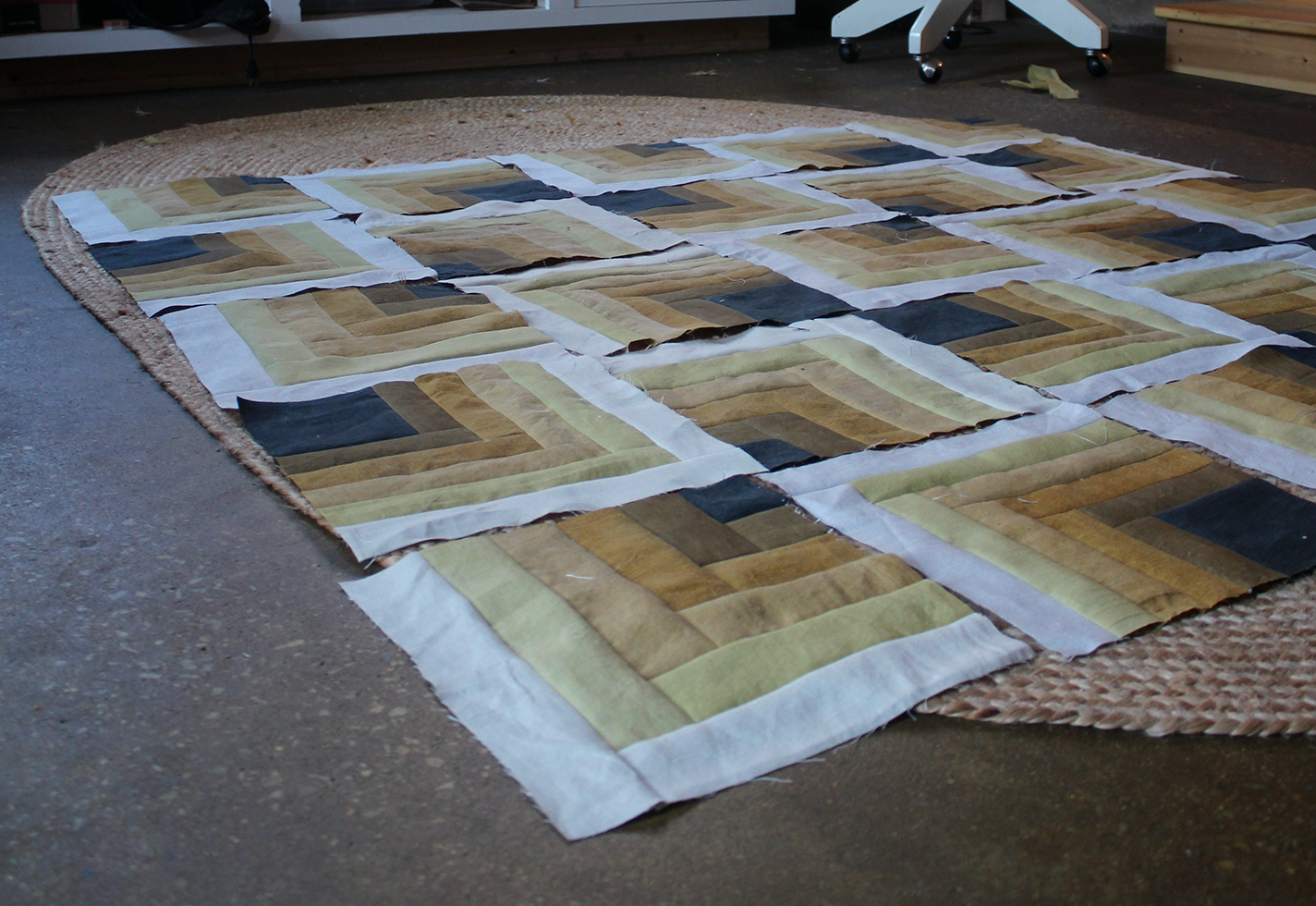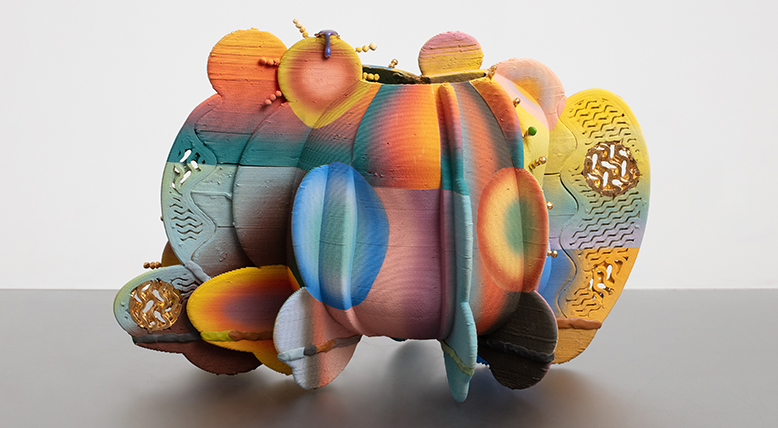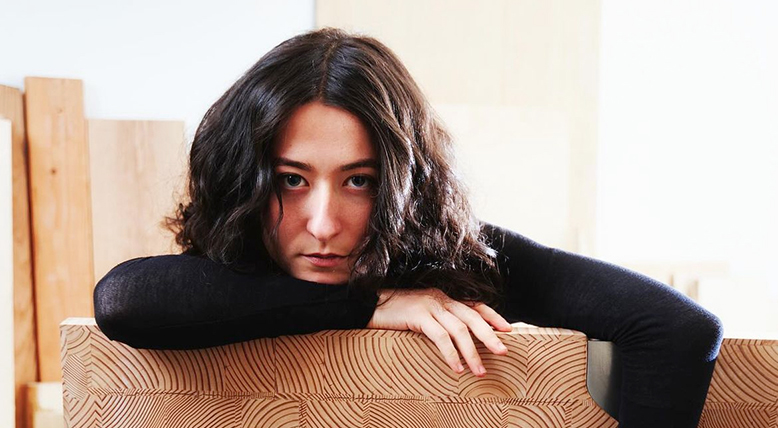On her small farm in southern New Jersey, Cait Nolan grows a wide spectrum of dye plants, including weld, acorn, black walnut, madder, goldenrod, Japanese indigo, and marigold. Using these dye plants, she transforms secondhand and traded fabric into swaths of color, which she then pieces into thoroughly earthbound quilts. Nolan’s quilts are hyperlocal by design; she uses only locally grown and foraged dyestuffs. And the cadence of the year—with seasons for sourcing fabric, gleaning and growing dye plants, dyeing, and quilting—imbues her work with intentionality and deliberate slowness, which she touts as “as a response to the overconsumption of capitalism.” The resulting quilts are striking and meaningful, with classic patterns rendered in deep, earthy tones and topped off with contrasting sashiko stitching. Kimberly Coburn dove into Nolan’s practice in “Stitched from the Soil” in the Winter 2026 issue of American Craft, now available here.
How do you describe your work or practice in 50 words or less?
I make land-based heirloom quilts. The fabric I use for my quilts is secondhand or traded. I dye the fabric exclusively with plants that I grow or forage.

Cait Nolan’s Sage Quilt, 2024, is hand-dyed with homegrown weld, acorn, black walnut, goldenrod, Japanese indigo, 62 x 64 in.

